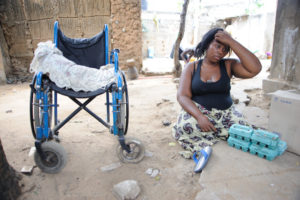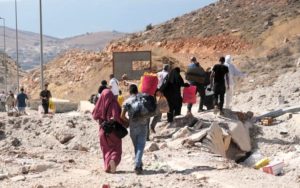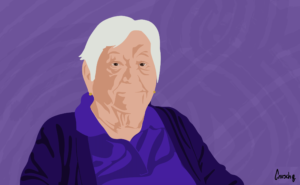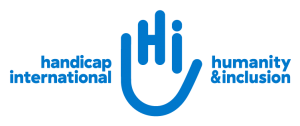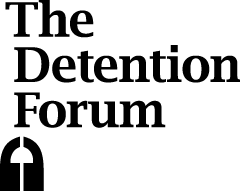With women the battleground, Engagement is the only Answer
17 August 2000 was a day of quiet jubilation in Kabul when the then Taliban authorities agreed that WFP-supported, female-run bakeries could re-open with their female staff. In addition to employing women these bakeries provided subsidized bread to women only. They were part of a larger, bakery-supported programme, designed to help poor families in different Afghan cities.
A month earlier the Taliban had issued Decree #8 banning the employment of Afghan women by NGOs except in the health sector. The reversal of Taliban policy on the bakeries was attributed to adroit negotiations as well as BBC interviews with the female bakery staff who stressed, for example, that it was not Islamic to deliberately starve children.
This experience showed that the Taliban, were sensitive to how they were perceived even if they were not overly concerned about the plight of hungry Afghans. It also showed that sustained engagement was essential and worthwhile.
Introduction
This Blog reviews how humanitarian actors and others have reacted to misogynistic Taliban Edicts while highlighting insights from prior experience during the first Taliban Emirate (September 1996 – end 2001). It concludes with some suggestions based on prior and contemporary experience.
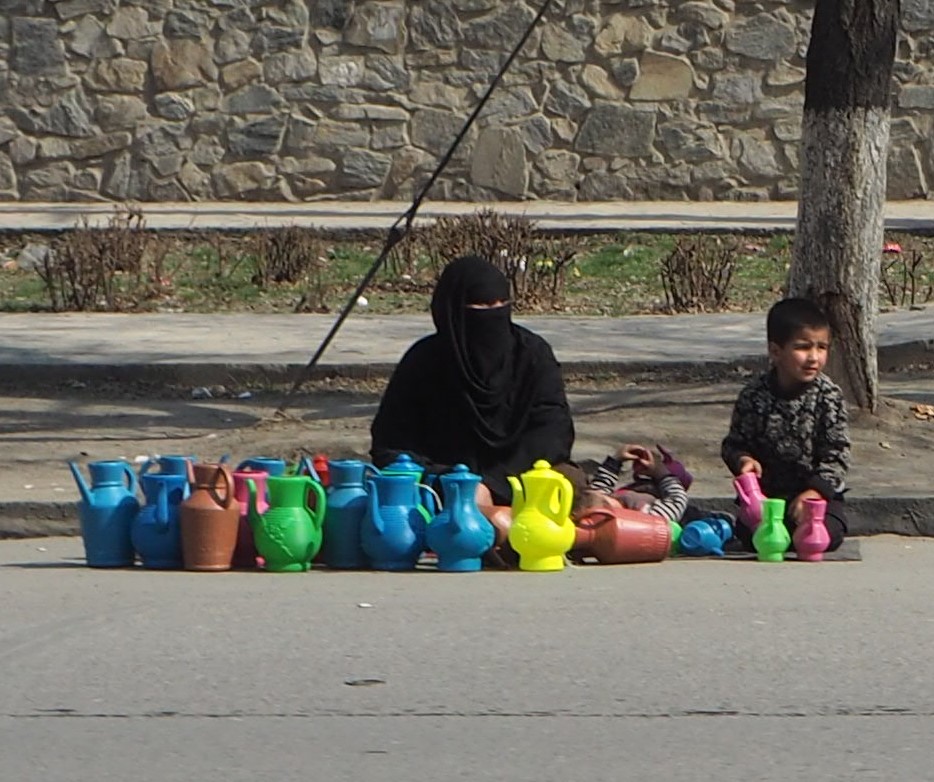
Taliban Edicts: women as outcasts
The return of the Taliban to Kabul, mid-August 2021, followed by the chaotic withdrawal of US forces, their allies, and much of the Afghan urbanized elite triggered a tsunami of anxiety and apprehension within and beyond Afghanistan. Although some 63% of the Afghan population is less than 25 years old, most Afghan families were well aware of the harsh, and for many, repressive, nature of Taliban rule.
The Taliban held a press conference in Kabul two days after arriving in the capital. Its spokesperson, Zabihullah Mujahid, advised that, having freed the country from occupation, the Taliban Movement wanted an end to war and an inclusive government. He emphasized that the Taliban were “committed to the rights of women within the framework of Sharia” adding that women would “be able to benefit from their rights.” In response to a specific question, Mujahid clarified that Afghan females had the right to study and work noting that women “are a key part of society” and would play an active role in it “within the limits of Islam.”
Within a few months, however, it was apparent that the Taliban did not-walk-the-talk of inclusivity nor respect for the rights of women. They unleashed a barrage of measures at odds with their initial assurances. Restrictions set out in various Edicts concern access to secondary and higher education, access to work in various sectors, access to public parks and baths, the need for a mahram – a male relative – when travelling a certain distance from their home as well as the need for head-to-toe covering in public spaces. Women and girls are effectively treated as outcasts; their presence is not condoned outside the home. This causes the girls and women of Afghanistan, their families, and Afghan society levels of harm and suffering that cannot be quantified.
Taliban policies also pose a life-and-death conundrum to humanitarian and other actors concerned about the survival of highly vulnerable Afghans. A significant proportion of people in dire need of life-saving support are women already struggling to survive and hold their families together.
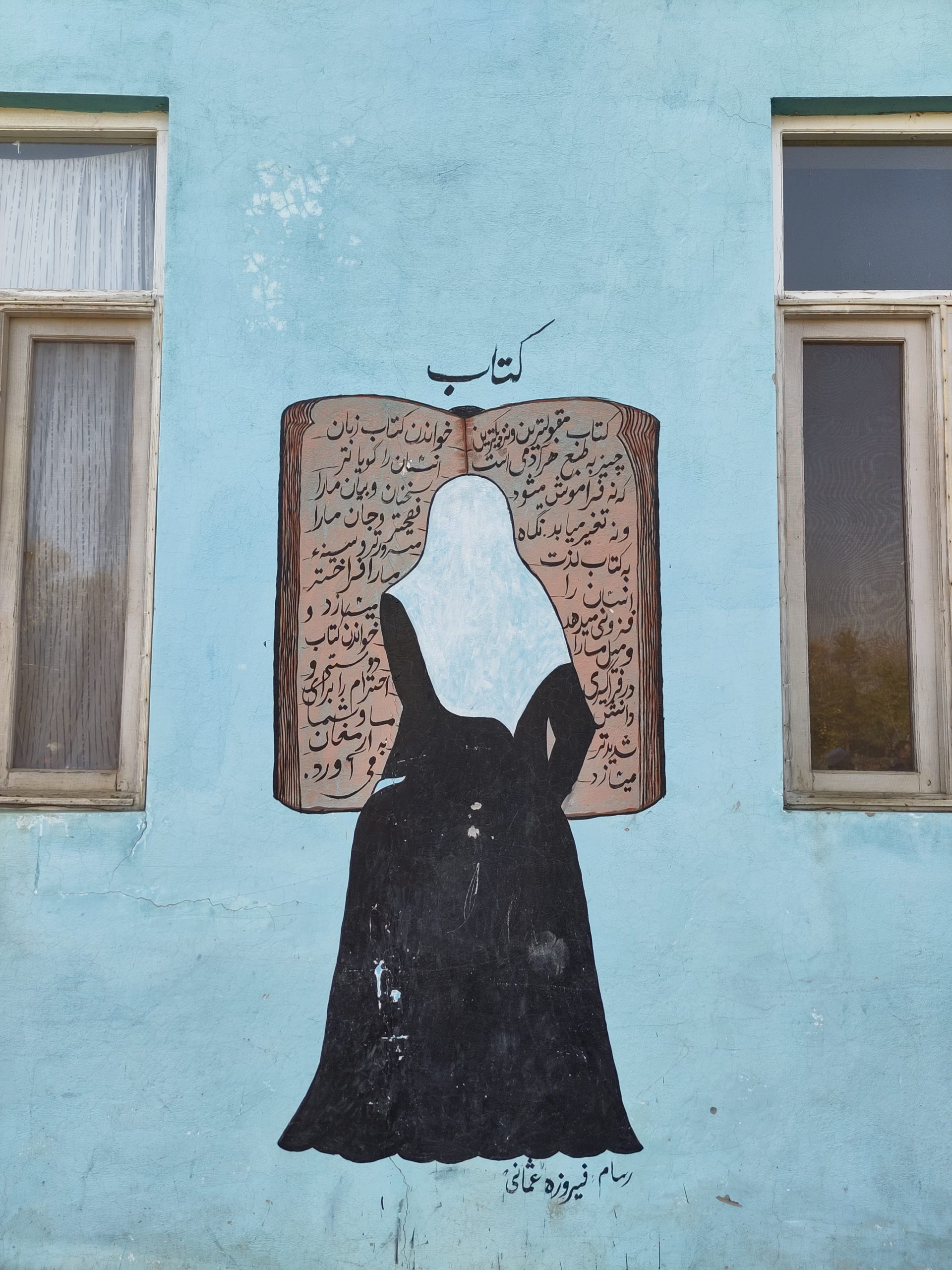
Wall-painting titled “Book” on a school in Charikar, Parwan province, in November 2022. Photo: Jean-François Cautain.
Humanitarians in Crisis
The reprehensible policies of the Taliban exacerbate deep-rooted and long-standing discrimination against females. This type of discrimination is well-known to aid agencies in Afghanistan, especially by organizations addressing the structural causes of poverty, the marginalization of women and particular ethnic groups, and high mortality rates. However, despite many decades of experience of working in war-torn Afghanistan humanitarian actors were, in many ways, ill-prepared to develop a common strategy to deal effectively with the Taliban’s edicts. Equally disquieting is the lack of unity and unhelpful confusion among humanitarians who are unable to agree on the fundamentals inherent in life-saving work that, in this instance, requires sustained negotiation with the de facto authorities. Such disarray not only complicates on-going efforts geared to maintaining relief operations, it also imperils the lives of Afghans in need of humanitarian support.
From the outset, aid actors reacted differently when the Edicts infringing on humanitarian action were announced. Some took a confrontational approach, announcing plans to immediately suspend operations and making their intentions known through the media. This included highly regarded NGOs such as CARE, Save the Children and the Norwegian Refugee Council (NRC). Other agencies, conscious that there are serious tensions within the Movement between so-called “hardliners” surrounding the Supreme Leader, Mullah Akhundzada in Kandahar and “moderates” running ministries in Kabul, were more deliberative. It is also apparent that there are differences in interpretation between senior level Taliban in central leadership positions and officials at the provincial and district level. This necessitates constant negotiation and navigation by aid agencies between different entities and personalities to secure support for humanitarian programmes.
High-level visitors also pursued contrasting and divergent approaches. Jan Egeland, head of the NRC visited Afghanistan in early January. As he himself noted he was “extremely blunt” when he explained to Taliban officials in Kabul that his organization was obliged to close programmes, temporarily, across the country.
UN Deputy Secretary-General, Amina Mohammed, undertook a round of visits to Afghanistan in January to highlight the importance of solidarity with Afghan women. She called for a united front in dealing with Taliban edicts while also acknowledging that there were tensions when pushing to save lives and advocating on human rights. A short while later, the Emergency Relief Coordinator (ERC), Martin Griffiths, led an NGO-UN team to Afghanistan where he met senior Taliban officials, Afghans in need of humanitarian help, and aid agency staff. In a press conference, Griffiths advised that the Taliban had authorized women to continue working in health care and in primary education. The Griffiths team advocated that exemptions to the Edict banning female employees apply to all aspects of humanitarian work. The Taliban, in turn, advised that they were in the process of developing guidelines and asked for patience. This may be an important evolution in the Edict saga or, merely, an effort to gain more time. Either which way, the problems posed by the Edicts will likely persist for some time given the nature of the Taliban regime and the multiple drivers of vulnerability.
According to the UN, two-thirds of the population – 28.3 million Afghans – have acute humanitarian needs. The combination of poverty and hunger are key factors in catastrophic levels of deprivation. Already in 2018 more than half the population – 54% – struggled to survive below the poverty line. Personnel running essential services such as health and education “had not been paid for months prior to the collapse of the Ashraf Ghani Administration” in 2021. The withdrawal of US forces and their allies in 2021 led to the abrupt cessation of external budgetary support and the massive aid pipeline that sustained the salaries of millions of civil servants. When coupled with the crashed economy and banking system – courtesy of the US-led seizure of US$7 billion of external, sovereign reserves – these shocks have contributed significantly to widespread and grinding poverty. Recently, the World Bank reported that Afghanistan’s GDP was understood to have experienced an accumulated contraction of some “30-35 percent between 2021 and 2022.”
Hunger stalks the land. Food insecure Afghans jumped “from 11 million in May 2021 to 20 million in May 2022.” According to USAID, nine out of ten households surveyed across Afghanistan “reported insufficient access to food” in November 2022. According to the International Committee of the Red Cross (ICRC) the number of malnourished Afghan children in need of care in the hospitals and clinics it supports “was 90% higher in 2022 compared to all of 2021.” Research by Médecins Sans Frontières (MSF) found that poverty and socio-political issues were the strongest barriers inhibiting access to essential services “including a functioning health system.” MSF has pushed to expand services such as an in-patient therapeutic feeding centre in Kandahar “following increased levels of severe acute malnutrition.”
This is the context in which humanitarian actors must labour to find a way to deliver on the fundamental principle of humanity – mitigating suffering through meaningful respect for the life and inherent dignity of at-risk people. Humanitarians, unfortunately, do not have a lot of leverage and neither do impoverished Afghans. Thus, humanitarians need to be constantly aware of the lack of a BATNA – a best alternative to a negotiated agreement. Threatening to leave is not going to earn them any brownie points with the Taliban and will add to the misery of everyone dependent on humanitarian support for survival.
Although Taliban policies do not directly affect UN relief agencies, prior experience underlines the need for aid actors to work in tandem to define a common approach. Given the diversity of ground realities throughout Afghanistan, agencies have different relationships with local authorities depending on the make-up and attitude of the latter as well as prior efforts and commitment to addressing gender inequality issues. This relates, directly, to the ability of agencies to identify and support those who are most in need, a significant proportion of whom are women including female-headed households. According to the ERC team, 30% of the “55,000 Afghan nationals” working with humanitarian NGOs are women. Finding ways to retain such staff will prove critical to agency operability and effectiveness.
Despite many similarities between the current situation and that which arose during the first Taliban Emirate in 2000, lessons from the past have not been heeded in the humanitarian arena, the media, or in academia. In 2000, Taliban Edict #8 was designed to control female employment in the aid community. Back then, the combination of war, drought, poverty, and hunger were key drivers of humanitarian need in a context where the Taliban sought international recognition beyond that provided by Pakistan, Saudi Arabia, and the United Arab Emirates.
Many humanitarians quickly understood the need for cohesion in their ranks. A dedicated study to identify and analyze different perspectives was commissioned by the UN country team. There was a great deal of consultation with different stakeholders; importantly, this included Afghan women. The objective was to find a way to stay productively engaged while maintaining, dialogue, however fitful with Taliban authorities. From the outset, some agencies wanted to leave. This was part of a pattern when expatriate workers felt offended by Taliban behaviour. In 1998, for example, the Taliban issued an order that all NGO offices and staff had to move to a common location, a derelict university building, known as the Polytechnic. NGOs were not enthused. Many threatened to leave. Others called for talks. Eventually, as time passed it became a moot issue as the authorities realized it was not a viable proposition. Today, those, including the diaspora, who argue in favour of shutting down or suspending programmes, find themselves in a heated, cul-de-sac debate that effectively asks whether it is OK for Afghan women and others to starve to make a “moral” point against despicable policies.
Part of the reality is that, from their perspective, it is the Taliban who hold the moral high ground. They see Western agencies as morally corrupt and harbingers of unwanted values and practices. As in the past, their answer to threats of withdrawal is likely to be “God will provide”. Female staff are, unquestionably, essential for effective programming. Thus clear communication and dialogue, rather than hostile, feel-good rhetoric, needs to inform humanitarian decision-making. Listening to Afghan women, staff as well as people in need, is no less important.
Other lessons from the year 2000 include:
* persist with patient, low-key engagement while avoiding megaphone diplomacy. This means not setting “red lines” or giving ultimatums, in private or in public, to the Taliban. It also means eschewing a hectoring approach or indulging in point-scoring in public or in bilateral negotiations;
* negotiators should not expect, nor request, an official reversal of repugnant Edicts;
* proceed in a “duck and weave” fashion to enable interaction with local authorities; and
* be aware that strong working relationships are essential, at the local and regional level.
Overall, this means being a “principled pragmatist”. No less important is the need to invest in a two-way communication strategy both within and beyond the humanitarian arena so that all concerned stakeholders are focussed on measures that help save lives and build a foothold for those in need to emerge from a hand-to-mouth existence.
The coming months will likely be challenging in Afghanistan. As humanitarians struggle with Taliban policies at odds with the well-being of the most vulnerable, needs assessment and monitoring of outcomes will prove particularly difficult to address. However, there is some evidence that negotiations with the de facto authorities or with leaders at the community level have enabled some NGOs to resume work with women staff. This is a positive evolution that needs continued support. It is Afghan women who will suffer the most if humanitarians are unable to persist with their life-saving work.
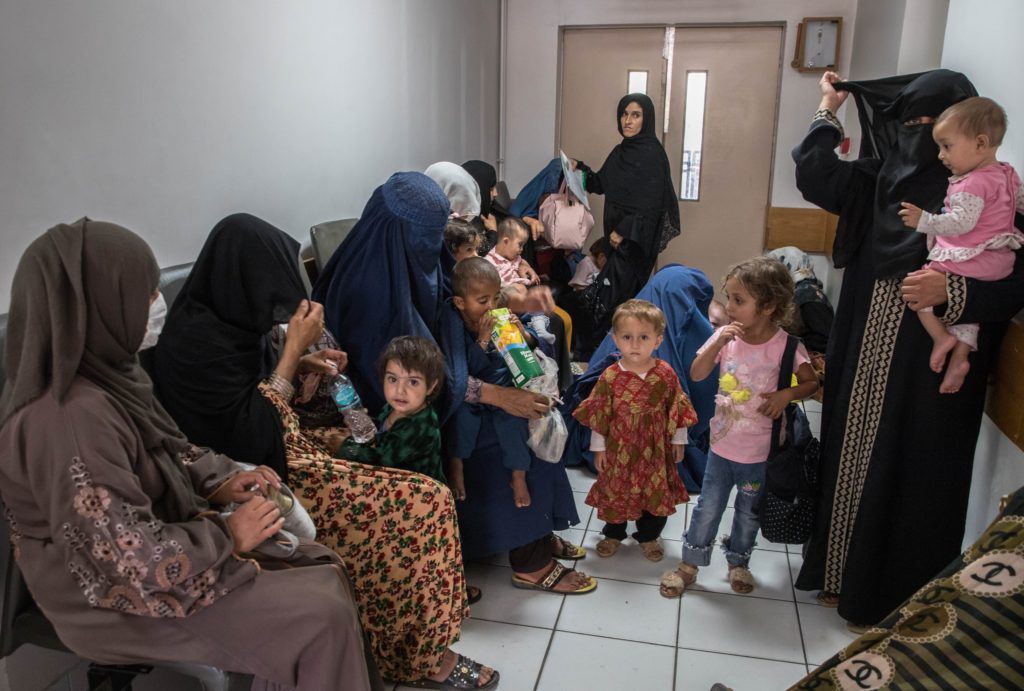
Children and their parents waiting to be called for a pediatric consultation at Kabul FMIC Hospital, La Chaîne de l’Espoir, Kabul, in November 2022. Photo: Oriane Zérah.
Conclusions
Hindsight is not always 20:20. But in Afghanistan – where the humanitarian community has been present for over four decades – there is no shortage of experience, studies, and insights to inform analysis and decision-making.
It is not a huge surprise that Taliban rule is disruptive or, indeed, misogynistic. It is also not news that discrimination against females is a deep and long-standing problem. Neither is it news that external interventions have been deadly and disastrous for Afghanistan and greatly helped the return of the Taliban to Kabul. Western policies that increased poverty, and crippled the economy since the Taliban took control of the capital, are also a significant factor in producing the conditions responsible for an unconscionable level of deprivation and suffering in Afghanistan. Thus, humanitarians need to be up-front on the multiple threats that put lives at risk and the political dynamics that produce them. This includes the latest round of Taliban edits which assume that women can be erased from Afghan society.
Afghans and humanitarians have been caught in the cross hairs of Taliban misogyny before. There is much to be gained from prior experience. Humanitarians should refrain from making this an ideological battleground and find ways to engage productively. Humanitarians need to unfurl their banner of strategic cohesion and hold it high. They need to mobilize a broad consensus and ensure consistency in the humanitarian fold. However tiring or frustrating, their motto has to be: Engage, Engage, Engage!
Back in 2011, then ERC Jan Egeland noted that the task of humanitarians was to “stay and deliver.” This was in reference to war-related insecurity but the humanitarian imperative demands no less today when Taliban edicts add to the marginalization already suffered by women and girls in Afghanistan. As noted by Afghan women’s rights activist and political leader, Fatima Gailani, in a recent online panel on Taliban edicts, “engagement is the only way.”
Norah Niland is a long-time humanitarian and human rights practitioner who first engaged in challenging social injustices as a civil rights activist in Northern Ireland. More recently, Norah worked in Afghanistan as head of the human rights team in UNAMA that developed a programme to reduce the direct impact of war on civilians with the use of evidence-based advocacy.
The content is the author’s responsibility alone and does not necessarily reflect the views of United Against Inhumanity or any of its members.
